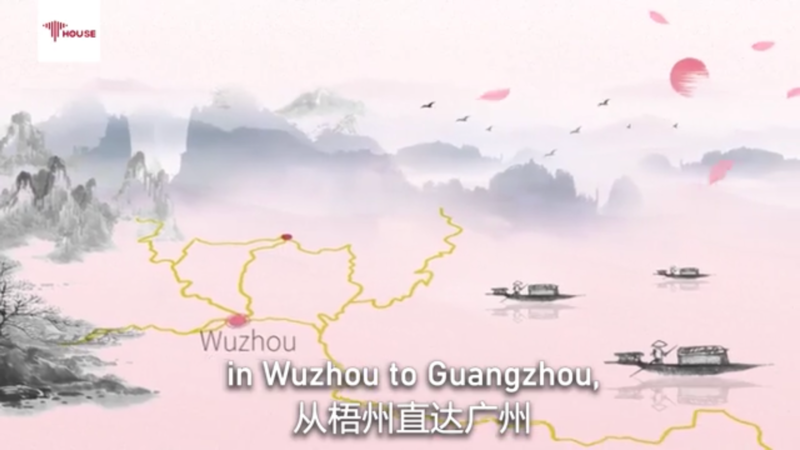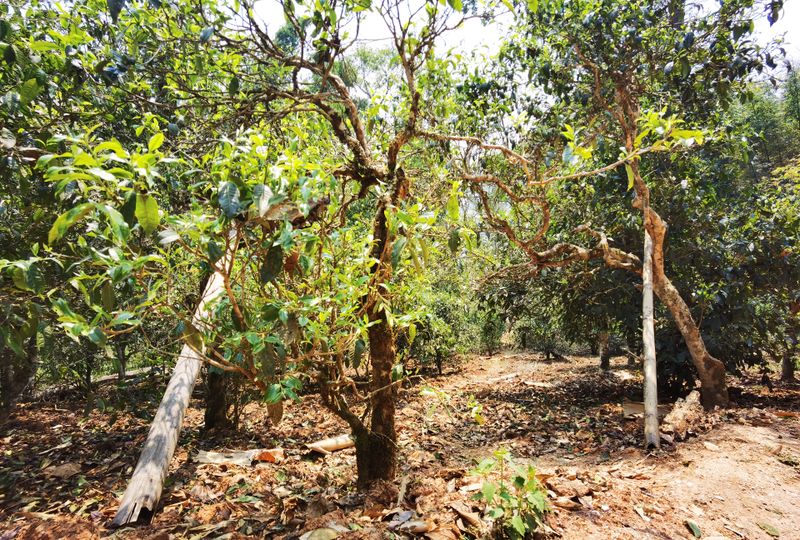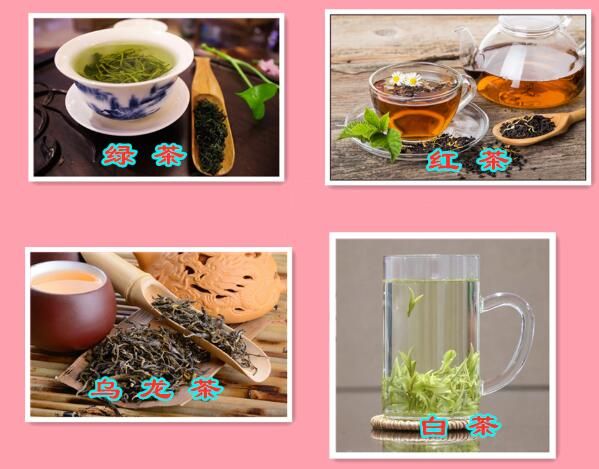本篇由桃观鱼茶友网(cy.tgyjx.com)提供阅读
最近六堡茶行销全球,引来了中国国际电视台(CGTN)对六堡茶古道寻迹的报导。视频一播出,六堡茶变得更热了!

CGTN摄制组在今年8月就来到梧州开始拍摄。他们通过实地走访,与当地茶企、群众沟通交流,深入了解梧州六堡茶的起源、特点、制作工艺、产业发展,以及当地茶企业带动贫困户脱贫致富的情况。


节目由美籍意大利人马里奥·卡瓦洛(Mario
Cavolo)主持。他亲身体验了采茶、制茶等过程,重温茶船古道历史,感受六堡茶产业发展给当地群众的生活质量带来的改变。

CGTN Editor\’s note:
China is on track to eradicate absolute poverty by the end of 2020. What\’s
next? In the video series \”From the Soil,\” CGTN has invited development experts
to China\’s rural regions to investigate the methods used to reduce poverty and
examine whether they can inform global poverty alleviation work. In the eighth
episode, Mario Cavolo, a senior fellow at the Center for China and
Globalization, goes to Wuzhou to investigate how an ancient tea-boat waterway
has been revitalized. The views expressed in the video are his own and not
necessarily those of CGTN.
In the past, the Liubao tea farmers used this river to transport tea into
Wuzhou City, south China\’s Guangxi Zhuang Autonomous Region. This whole waterway
was called the Chachuangudao – a waterway for tea trade. Liubao tea emerged in
the Tang and Song dynasties (618-1279) and flourished during the Ming and Qing
dynasties (1368-1911). It is reputed for its unique features: dark color, strong
flavor, years of preservation and mellowness.
In the Qing Dynasty (1644-1911), Liubao tea began to be transported from the
trunk waterway in Wuzhou to south China\’s Guangzhou via Liubao, Dong\’an, Hejiang
and Xijiang rivers. And then it was taken to central China\’s Nanyang and other
parts of the world, becoming one of the major commodities on the Maritime Silk
Road.
However, as time passed, more convenient means of transportation came along
and replaced the waterway trade. The ancient tea-boat waterway gradually w
乌龙茶可以做成奶茶吗
ent
into a decline. The annual output and sales of Liubao tea dropped from about
1,500 tonnes to 197.5 tonnes, while the number of impoverished households went
up to 760 with 2,863 people.
My name is Mario Cavolo. I have lived in China for over 20 years. This is my
first time in Liubao Town of Wuzhou. I wonder how the town rose and fell because
of its waterway, and how poverty alleviation was encoura
乌龙茶为半发酵茶
ged. Visiting the
village allowed me to better compare the differences between the poverty
alleviation models of the U.S. and China.
Mario Cavolo visits a tea plantation.
Tangping, a village where every household used to grow Liubao tea, has
outstanding mountains, water and soil. However, over a decade ago, due to
limitations such as geographical location, the decline of waterways and
marketing channels, tea farmers gave up growing Liubao tea and fell into
poverty.
Wei Jiequn is the inheritor of the intangible cultural heritage of the
traditional craftsmanship of Liubao tea. She has stuck to the original style of
making tea by hand for six decades. Shi Rufei is the daughter of Wei Jiequn. She
has inherited the traditional skills as well.
\”So we keep the most original hand-making skills of Liubao tea. In the early
stage, firewood was used to roast the tea, and charcoal was used to dry the tea
in the later stage,\” she introduced the technique while demonstrating it to
me.
With the support of the government, the model of combining intangible
cultural heritage with hand-roasted tea has been recognized by the market.
Despite the small scale, the villagers helped each other to adopt a brand
sharing strategy.
Liang Jiayi is a member of the tea cooperative of Master Wei. He has managed
to support his family by joining the cooperative.
Right here, we\’re following Master Liang to the Baji Tea Mountain. Due to
insufficient green tea production by the cooperative, most tea factories in
Wuzhou cooperate w
乌龙茶名
ith tea farmers based on the tea plantation. The tea industry
is growing at the same time, and tea farmers are being helped out of
poverty.
As a state-owned leading enterprise with over seven decades of history,
Wuzhou Tea Factory has pioneered the introduction of new Liubao tea
technologies. Having revitalized following the government\’s policy support, the
factory is actively contributing to poverty alleviation.
Wuzhou Tea Factory provides 20 tonnes of organic fertilizer to tea farmers
for free each year. Quality tea seedlings are distributed to impoverished
households, which have received training on tea growing and maintenance and
tea-making technology, thus drawing more and more villagers, who had left to
work as migrant workers back to the village.
The local government, through vigorous efforts of almost a decade, expanded
production to an industrial cluster with about 86 square kilometers of tea
plantations and a total output of over 20,000 tonnes, worth over 3 billion yuan,
and a general output value of over 8 billion yuan.
An aerial view of the tea plantation.
Poverty alleviation doesn\’t happen overnight, and the most challenging task
is to prevent a relapse.
For instance, three decades ago, the incidence of poverty in the U.S. was 15
percent. However, today 600,000 Americans are homeless. In Los Angeles alone,
the figure exceeds 60,000. This isn\’t because the U.S. government didn\’t attempt
to alleviate poverty. Generous official and private donations have been made,
while many poverty alleviation projects have also been launched, but it\’s
difficult to prevent the beneficiaries from relapsing into poverty, hence the
vicious cycle of poverty alleviation and relapsing into poverty continues.
However, take Liubao tea for example, being government-led doesn\’t mean full
state financial support. Instead, it\’s with social participation while being
self-reliant and with all-round development. I\’ve made a major discovery in
Wuzhou: the Alibaba Vault.
Like wine, dark tea increases steadily in value as it ages and a large tea
storehouse is like a vault.
Dr. Ma Shicheng is a dedicated senior tea manager. He\’s among the first
Chinese-educated tea doctors. After many years of experience, Dr. Ma leads his
team and promotes the protection of this traditional industry of Liubao tea as
well as the financial industry\’s systematic development.
\”Liubao Tea possesses the attributes of culture, health and investment and
wil
乌龙茶是什么样子
l be more valuable with time. We\’ve built a common tea storehouse, and the
tea\’s value will increase each year. In addition, major banks do regard the
value of your tea as a legitimate asset that
哪家蜜桃乌龙茶好喝
may act as loan collateral,\” said
Dr. Ma.
We witnessed the success of investment in such tea-storage banks where
thousands of tonnes of tea, starting in quantities of around 10 kilos, are
meticulously stored in a controlled environment, increasing in value by 15 to 20
percent per year. Encouraged by Liubao Tea Industry Promotion Office of Wuzhou,
the financial attributes of aged Liubao tea have been uncovered with the
foundation of the tea bank.
Wuzhou has staged global promotional campaigns for the tea-boat waterway in
seven countries along the Belt and Road Initiative, such as Malaysia and
Indonesia, and around two-dozen Chinese cities. The participating enterprises
have received in total over 100 million yuan worth of orders.
A small piece of tea-leaf has become the supporting point of the Archimedes\’
lever that is reviving Liubao Town and even Wuzhou as a whole.
Here\’s the largest key hydraulic project of the Xijiang River. The expansive
confluence of the three rivers stretches for 200 kilometers along the golden
waterway. Over the last decade, the sea-freight capacity grew from 39 million
tonnes to 145 million tonnes.
Learning about the modern day water locks of the Xijiang river, stepping back
in time up in the charming Liubao tea fields, our Wuzhou adventure from the soil
to the river remembers the past, reveals the present and encourages a bright
future.
来源:六堡茶微刊
如涉及版权问题请联系删除
人生有涯,而学海无涯。恭喜茶友又得到一篇茶叶的知识,牢记桃观鱼茶友网(cy.tgyjx.com),每天带你了解茶叶的知识。













